History
The island took its name from Mykonos, the son of the mythical king of Delos, Anios, who was a descendant of the god Apollo and nymph Rhoe. According to the mythology the giants who had been killed by Hercules were buried under the large granite stones of the island. Possibly the first inhabitants of Mykonos were Carians, Egyptians and Cretans. There followed the arrival of Ionians from Athens under the leadership of Hippocles (end of the second millennium BC). Little is known about Mykonos during ancient times but, by coin depictions, we are able to presume that Dionysos was the islandís patron god.
During Byzantine times Mykonos was initially subject to the province of islands and later to the theme of Aegean. By 1207 it was under the occupation of the Venetian brothers Andrea and Jeremiah Ghizis while in 1292 was ravaged by Catalans. A century later, Mykonos was conceded to Venice by its last ruler, Georgios Ghizis. The island was totally destroyed and practically deserted in 1537 by Khaired-Din Barbarossa.
During the Veneto-Turkish wars (1645-1669 and 1684-1699) Mykonos belonged for a while to Venice, while in the Russo-Turkish Wars of 1770-1774 the islanders actively supported the fellow Orthodox nation of Russia with Catherine the Great. During Turkish occupation, Mykonians proved to be the most experienced sailors and offered their precious services and fleet with numerous ships to the War of Independence. In the early 18th century Mykonos had 100 small and 40-50 large ships that sailed the Mediterranean and the Black Sea. In 1821 during the War of Independence Mykonos contributed with ships to keep the Turkish navy at bay when it attempted to land on the island in 1822.
After liberation and the recognition of Greece as an independent country in 1830, Mykonos took up enthusiastically the task of rebuilding. Although after the war Mykonian shipping was deteriorated and the island's economy practically was destroyed, the people of Mykonos succeeded in reestablishing the commercial fleet, dominated seas and brought wealth to the Island.
 After an interesting bus ride to the port of Piraeus, we boarded a ship for a cruise to three Greek islands. Here we are leaving Piraeus and we see the city of Athens.
After an interesting bus ride to the port of Piraeus, we boarded a ship for a cruise to three Greek islands. Here we are leaving Piraeus and we see the city of Athens.
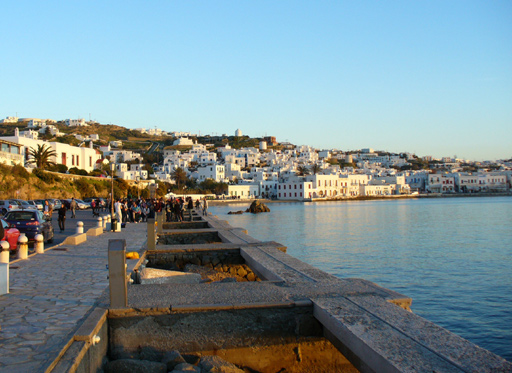 We arrive at the island of Mykonos.
We arrive at the island of Mykonos.
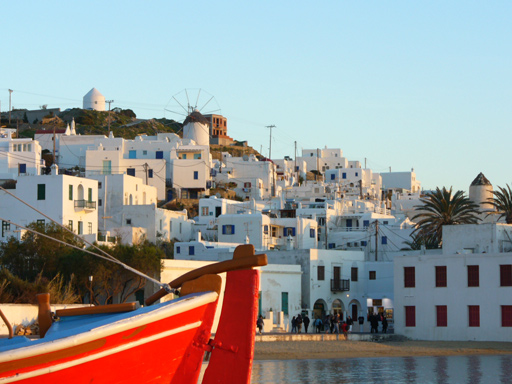
A view of the city with its white buildings.
 A shot showing the windmills.
A shot showing the windmills.
 A small church.
A small church.


 The Paraportiani church, built on the site of of the postern gate (paraporti.) It is made up of four chapels at ground level with another above. Part of it dates from 1425 while the rest was built in the 16th and 17th centuries.
The Paraportiani church, built on the site of of the postern gate (paraporti.) It is made up of four chapels at ground level with another above. Part of it dates from 1425 while the rest was built in the 16th and 17th centuries.
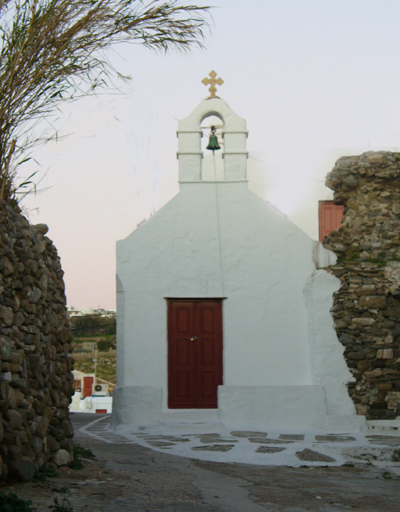 Another church.
Another church.
 Yes, those are two pink pelicans there, descendants of Pedros the Pelican.
Yes, those are two pink pelicans there, descendants of Pedros the Pelican.
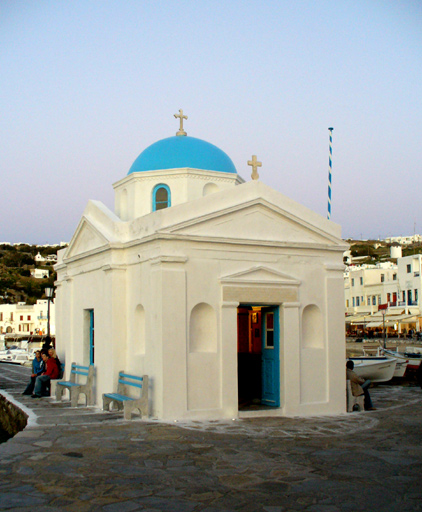 Yet another church.
Yet another church.
 A sunset at Mykonos
A sunset at Mykonos
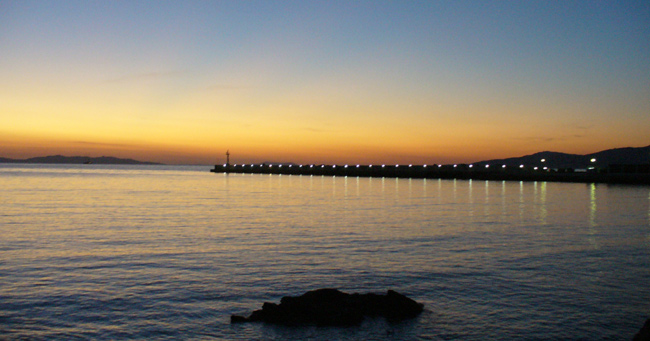 The lights of the harbor as we walk back towards the ship.
The lights of the harbor as we walk back towards the ship.
Next we go to the island of Rhodes.
